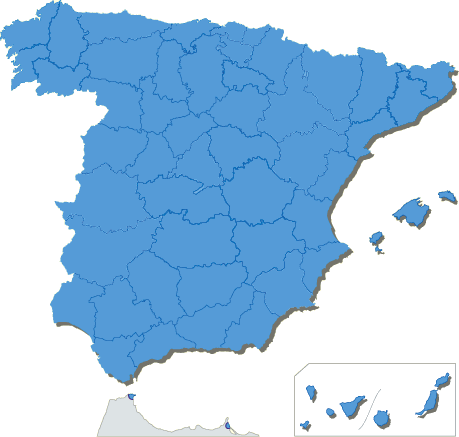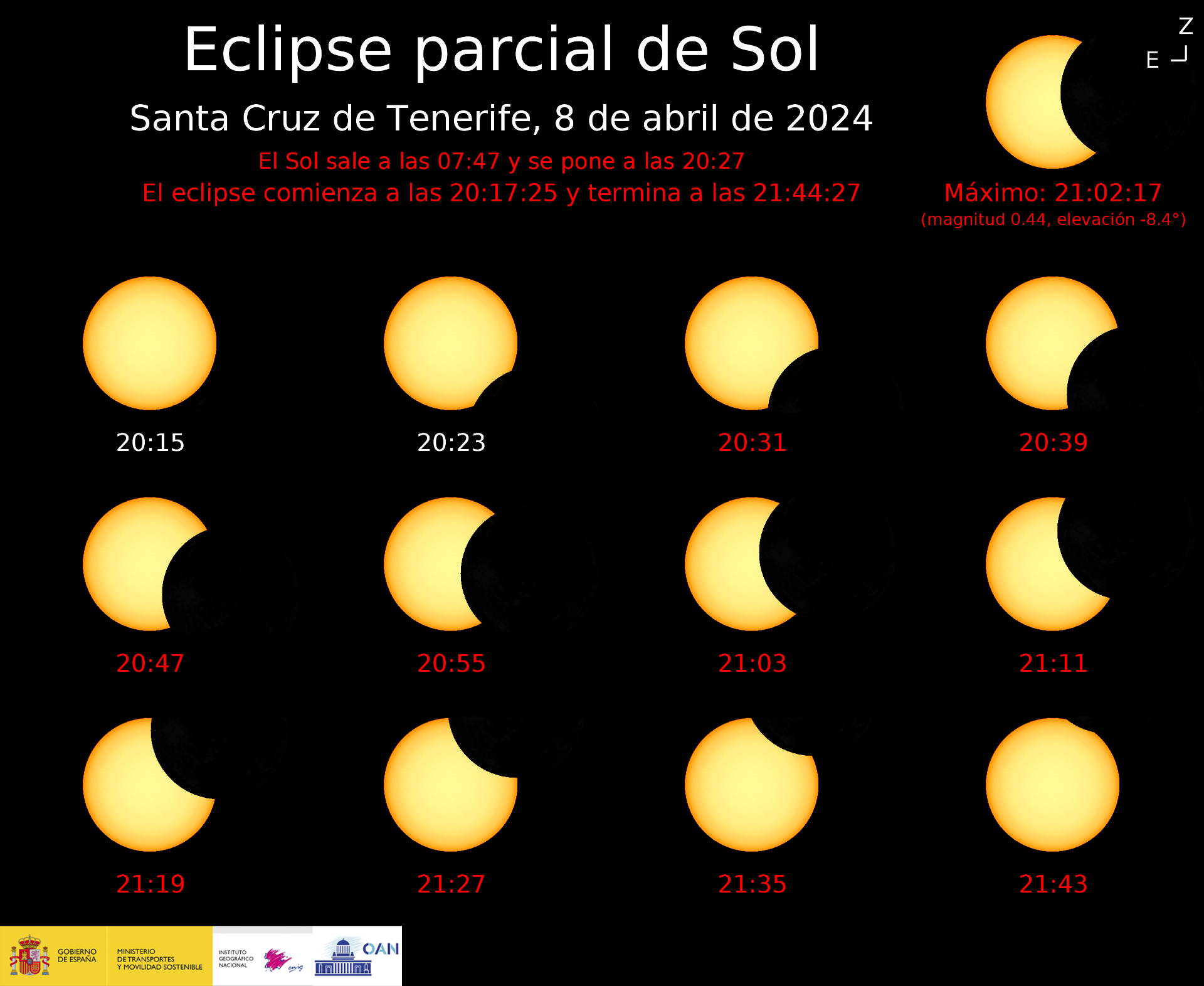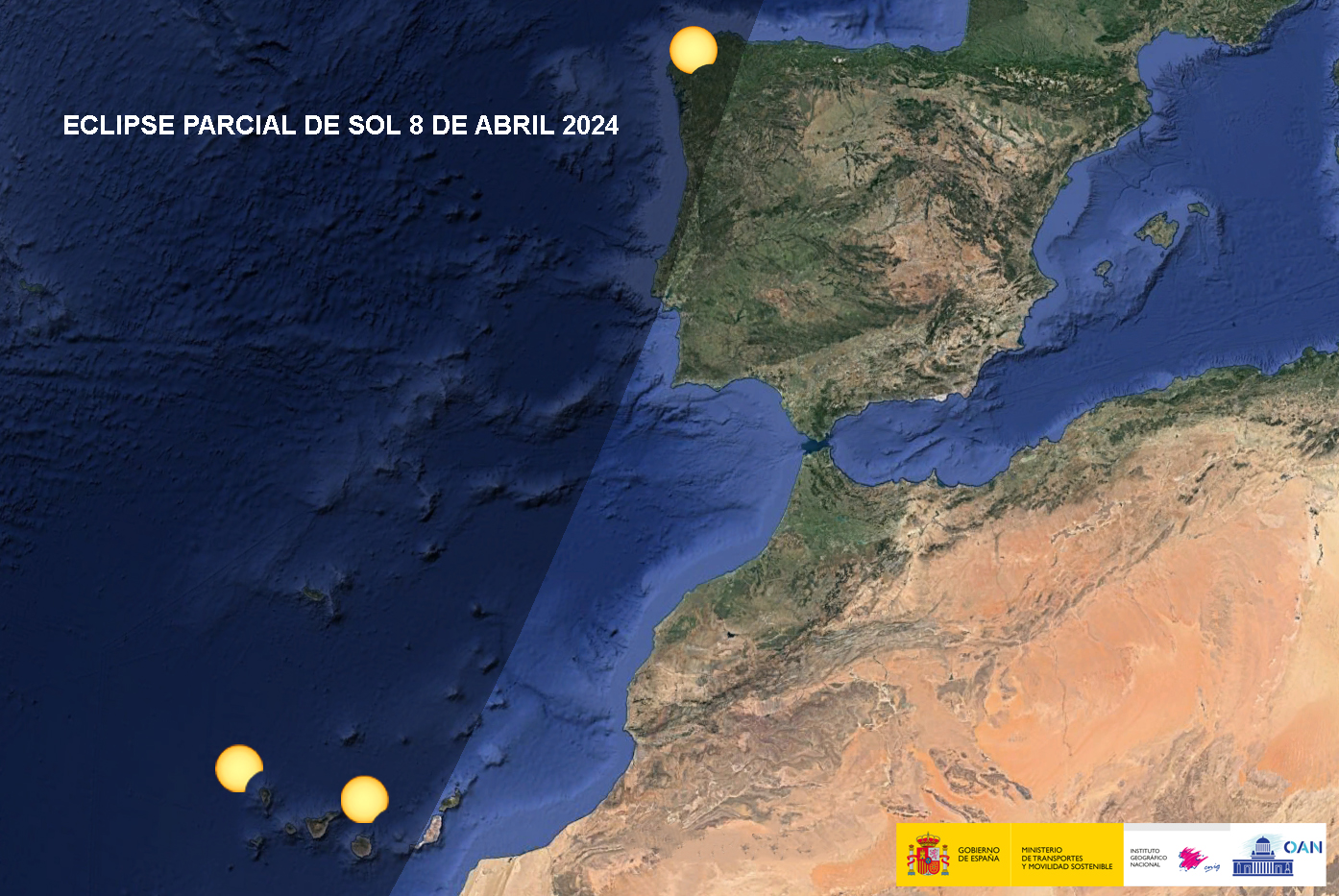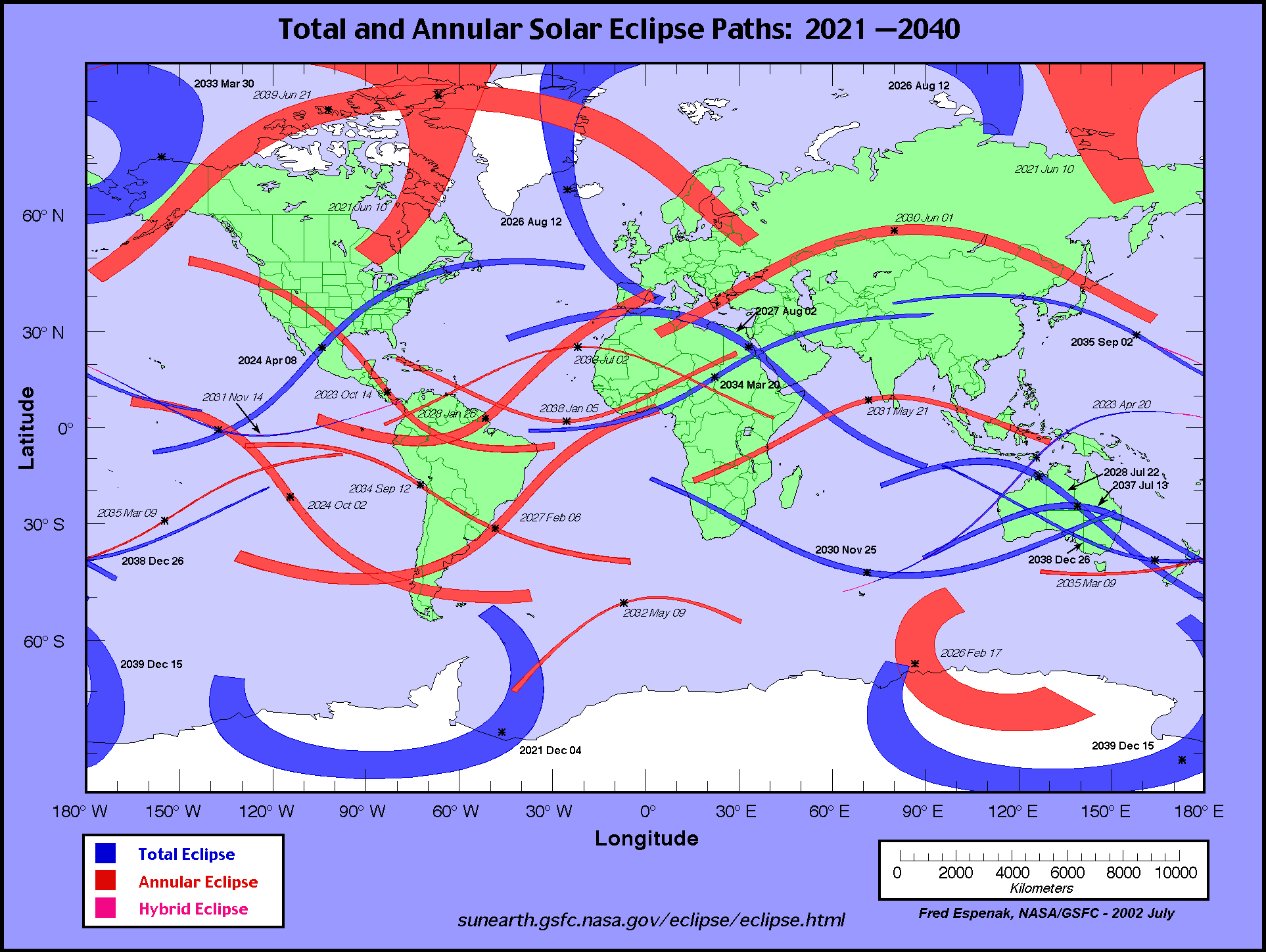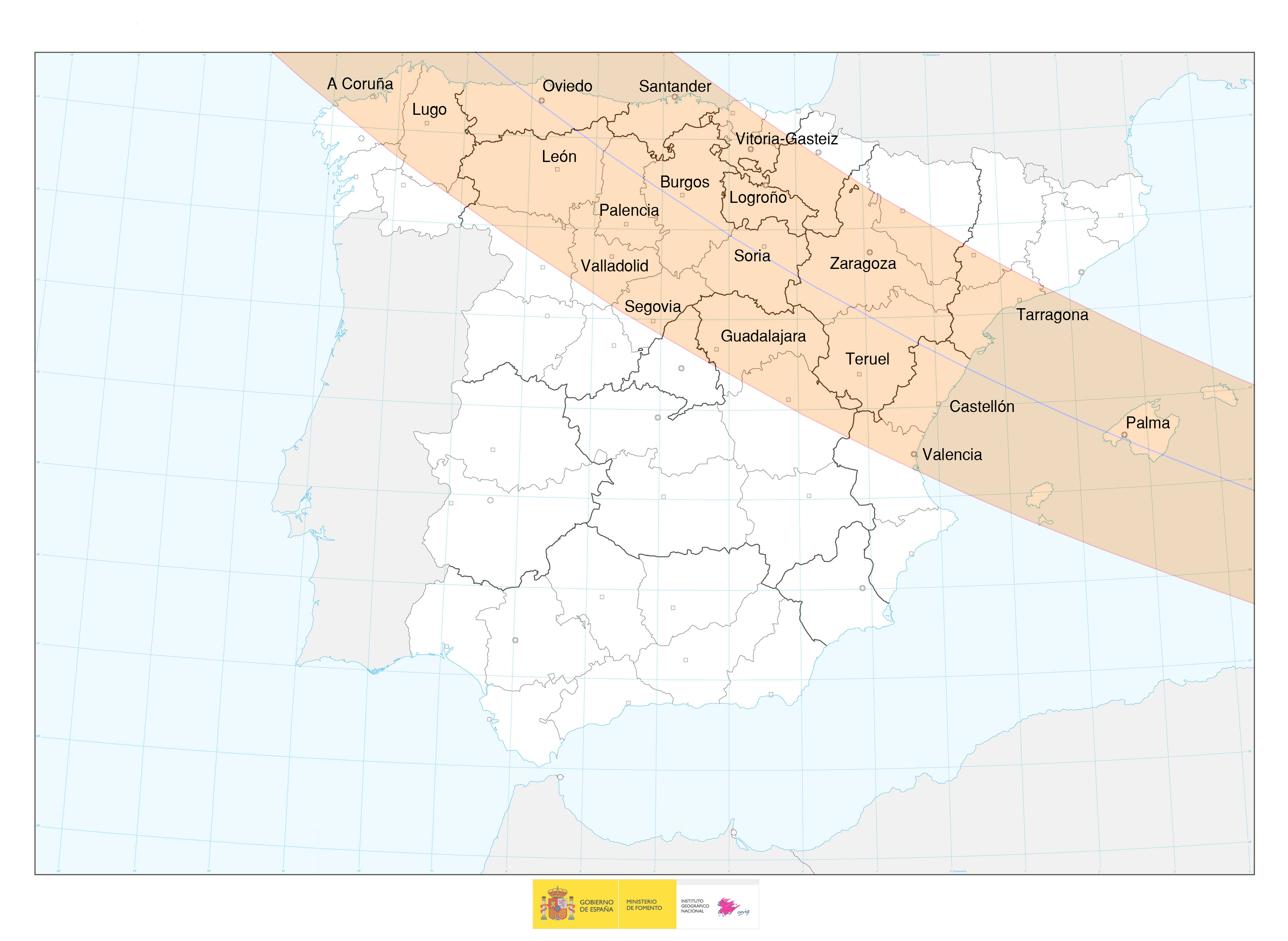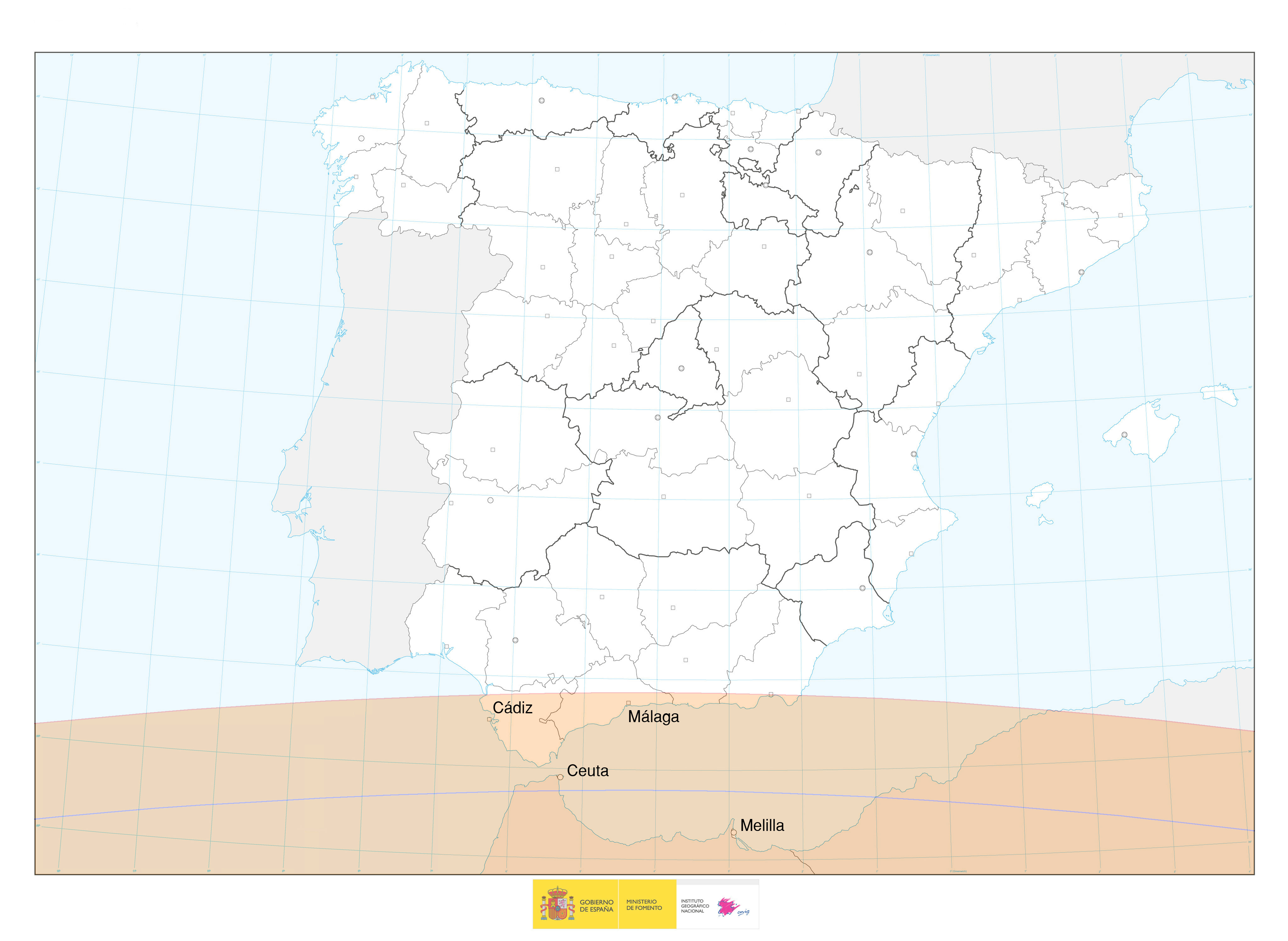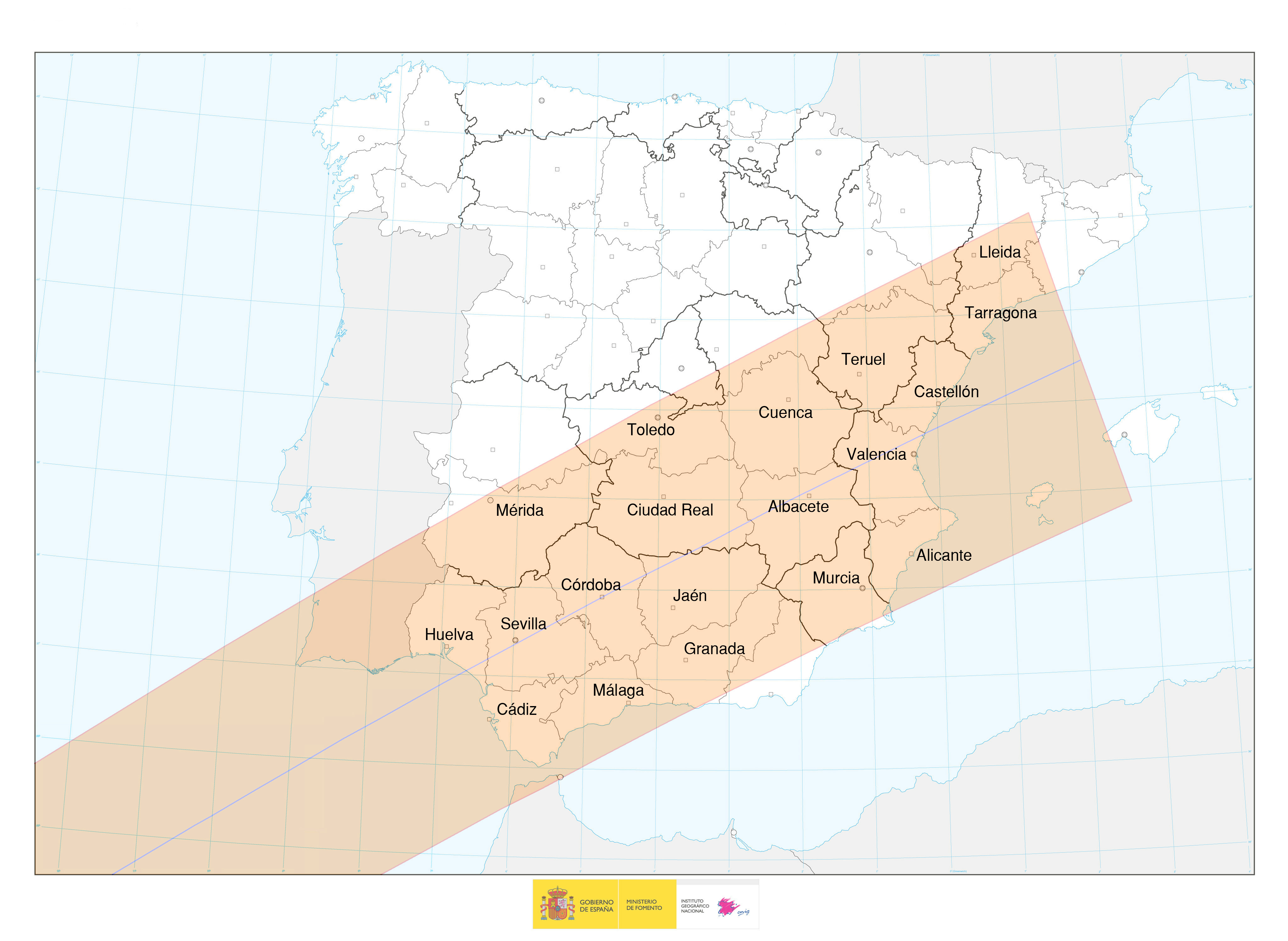Información astronómica

Eclipse parcial de Sol del día 8 de abril de 2024
Observación segura de eclipses de Sol
-
Nunca debe observarse el Sol directamente, a simple vista o con gafas de sol. Durante un eclipse parcial, el Sol nunca está totalmente cubierto por la Luna y por lo tanto mirarlo sin una protección segura y adecuada puede dañar los ojos, al igual que sucedería en un día cualquiera cuando no hay eclipse.
-
Tampoco debe observarse el Sol con aparatos (cámaras, vídeos) o instrumentos (telescopios, prismáticos) que no estén preparados para ello y dispongan de los filtros solares correspondientes. Tampoco debe observarse con filtros no homologados para la observación segura del Sol.
-
El Sol puede ser observado sin ningún peligro viendo su imagen proyectada sobre algún tipo de pantalla situada a la sombra. Por ejemplo, la imagen conseguida sobre una pared o un techo con un espejito plano cubierto enteramente con un papel al que se ha recortado un agujero de menos de 1 cm de diámetro. No observe la imagen del Sol en el espejo, mire sólo la imagen proyectada.
-
El Sol puede ser observado con seguridad mediante unos filtros denominados comúnmente gafas de eclipse. Deben estar homologadas por la Comunidad Europea para la observación solar (índice de opacidad 5 o mayor) y deben ser usadas siguiendo las instrucciones impresas en ellas. Deben estar en perfecto estado de conservación. No ande mientras las use, preferiblemente permanezca sentado. No se las quite hasta haber apartado su mirada del Sol. No deben ser usadas con aparatos ópticos, aunque sí pueden superponerse a las gafas graduadas de uso habitual.
-
Se desaconseja utilizar instrumentos ópticos salvo por parte de profesionales o expertos de reconocida experiencia en la observación solar. No se deben utilizar filtros solares que se enroscan al ocular, pues alcanzan una alta temperatura y pueden romperse. Si son necesarios, los filtros deben colocarse delante del objetivo.
Observación del Sol con gafas de eclipse o por proyección
Observar el Sol siempre entraña riesgo, pues la gran cantidad de radiación que emite a diversas longitudes de onda (principalmente infrarrojo, visible y ultravioleta) puede dañar la vista, produciendo incluso ceguera si la observación es prolongada. Como regla general, y como en un día cualquiera, no debe observarse el Sol directamente: ni con aparatos, ni filtros o a simple vista. Esto es así tanto al observar el Sol sin eclipsar, como con el Sol parcialmente eclipsado o durante un eclipse anular.
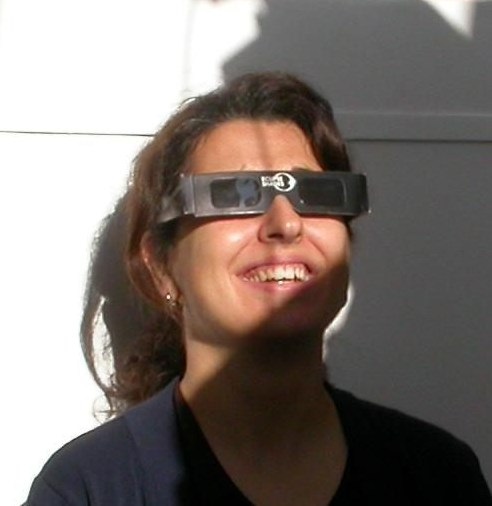
Para evitar cualquier accidente conviene observar el Sol proyectando su imagen sobre una cartulina, pantalla, pared o techo. Sólo en caso de disponer de un filtro profesional, homologado para la observación visual del Sol, se puede usar para ello. Los filtros caseros son totalmente desaconsejables. No son adecuados para ver el Sol: gafas de sol, cristales ahumados, radiografías, reflejos en el agua, filtros caseros... Algunos de estos sistemas filtran la luz visible pero no la invisible (radiación infrarroja y ultravioleta), y pueden causar daños transitorios o permanentes a la vista.
Recomendamos encarecidamente visualizar el Sol por proyección, tal como se describe más abajo, o bien usar un filtro homologado, por ejemplo los popularmente conocidos como gafas de eclipse, que reducen la luz solar en un factor superior a 30.000 veces. Deben cumplir la certificación correspondiente de la Comunidad Europea. La observación mediante gafas de eclipse debe realizarse durante cortos periodos de tiempo (medio minuto) seguidos de descansos de mayor duración, y nunca usarlas conjuntamente con unos prismáticos o un telescopio, instrumentos que requieren sus propios filtros colocados delante del objetivo.
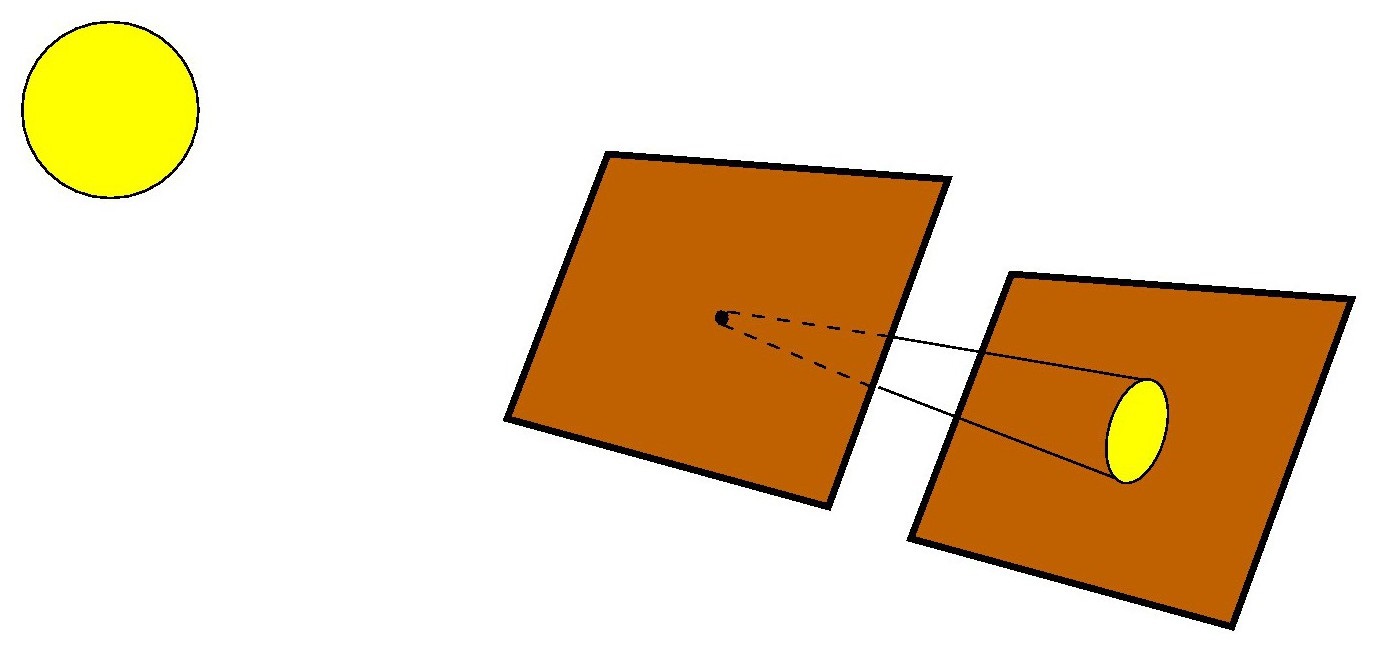
El método más simple para proyectar la imagen del sol consiste en utilizar dos cartulinas, a una de las cuales se practicará un pequeño agujero (de unos milímetros, no hace falta que sea circular). Colocándose uno de espaldas al sol, se sujeta esta cartulina de manera que su luz pase por el agujero y aparezca en la otra, situada a dos o tres palmos de distancia y a la sombra de la primera. (Viene a ser una cámara oscura.) En lugar de una cartulina agujereada puede usarse una espumadera de cocina, obteniéndose en este caso múltiples imágenes del Sol.
Para proyectar la imagen del Sol obteniendo más luminosidad, pueden utilizarse unos prismáticos (o un pequeño telescopio), aunque por periodos de tiempo muy cortos a fin de que no se dañen por el calor del Sol. El enfoque de la imagen se consigue ajustando la corrección dióptrica del ocular. La imagen inferior izquierda muestra este método. Precaución: ¡no mirar por el aparato!
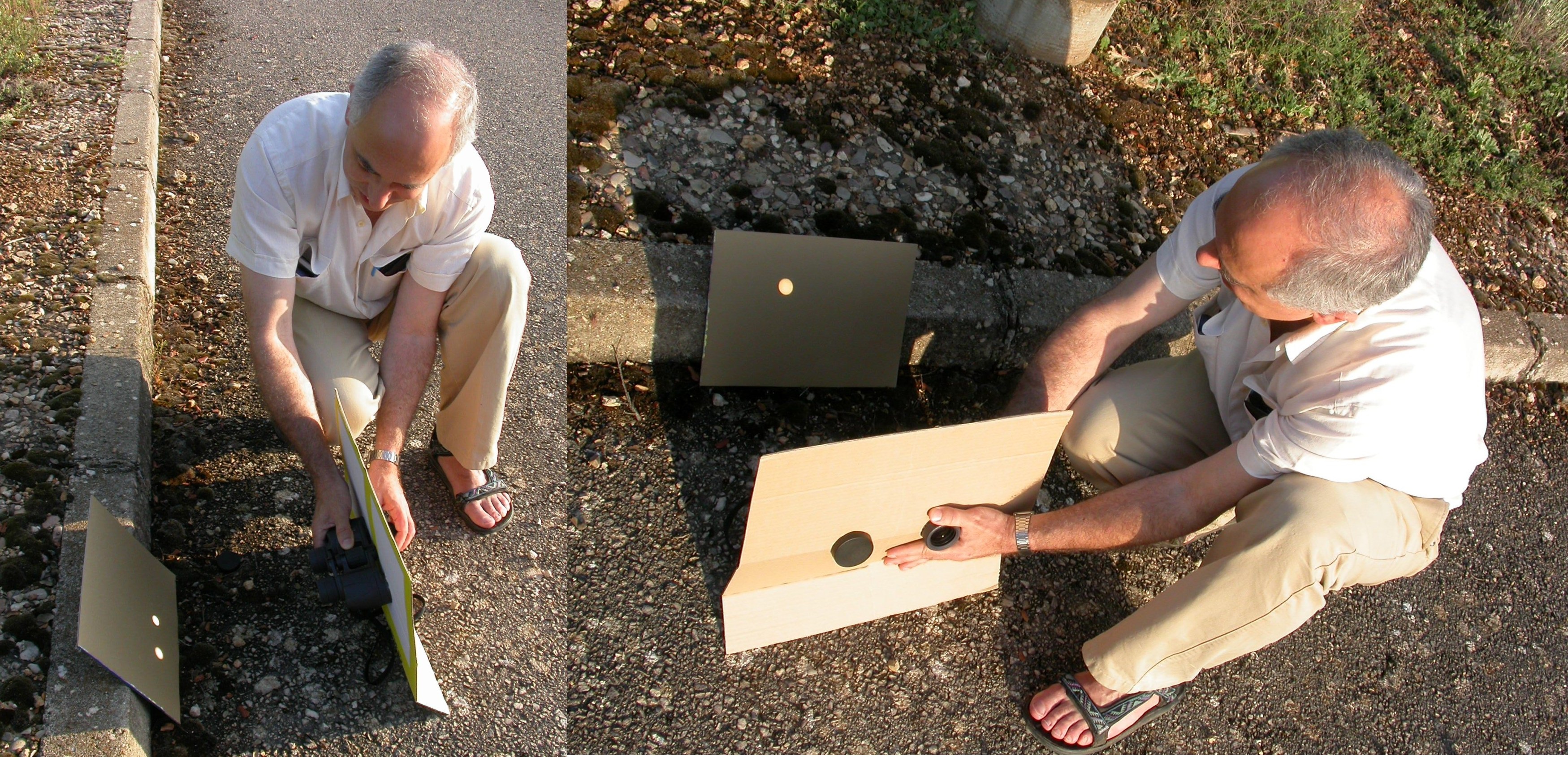
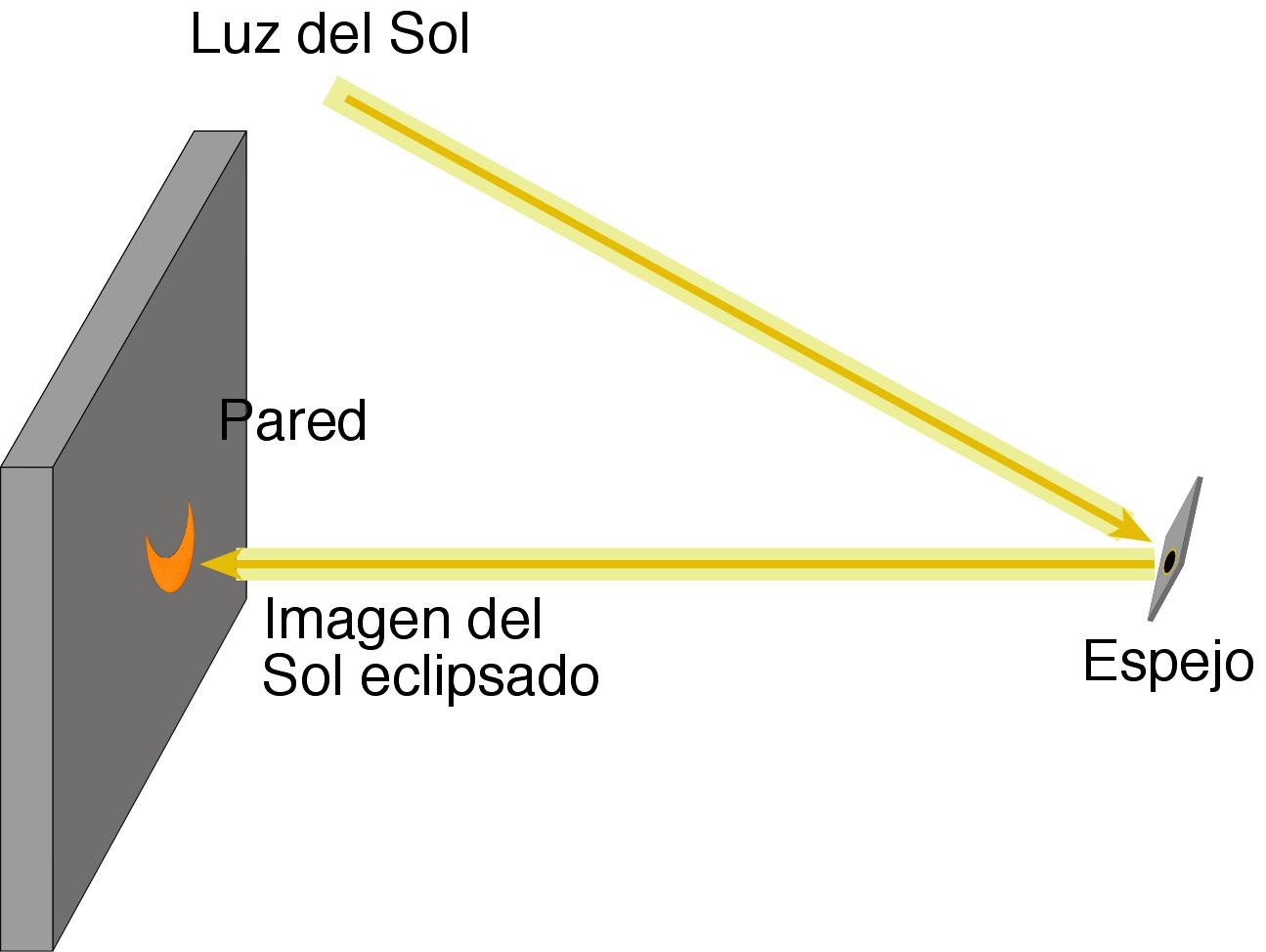
Otro sistema seguro y sencillo consiste en proyectar sobre una pared que esté a la sombra o sobre el techo la imagen del Sol obtenida con un espejo plano de mano cubierto con un papel al que se ha recortado un agujero de entre 5 y 10 milímetros de diámetro. Este sistema se muestra esquemáticamente en la imagen superior derecha.
El eclipse en las capitales de provincia
Seleccione en el mapa inferior la provincia para obtener la secuencia del eclipse tal como se verá desde su capital, con los tiempos expresados en hora oficial.
La imagen cargada por defecto corresponde a la secuencia del eclipse correspondiente a Madrid, y puede ampliarse pulsando sobre ella.
Detalles
El eclipse será visible como parcial en Norteamérica, Centroamérica, Islandia, las Azores, Madeira, el oeste de Reino Unido y, muy déblimente, en el extremo noroeste de la península y las islas Canarias más occidentales.
La duración total del fenómeno será de 310 minutos (algo más de 5 horas).
La franja de totalidad atravesará América de sudoeste a noreste, pasando por los siguientes países: México, Estados Unidos y Canadá.

El máximo del eclipse se producirá a las 18h 17m TU al norte de Nazas (México), siendo la duración máxima de la totalidad de 4 minutos y 28 segundos.
En España el eclipse será visible muy débilmente (magnitudes en torno a 0,2 y menores) en las islas Canarias más occidentales y en el noroeste peninsular, pero durante pocos minutos debido a que el Sol se ocultará poco después del comienzo del eclipse. La magnitud es la fracción del diámetro solar ocultado por la Luna, y NO es lo mismo que la fracción de área ocultada. La fracción de área ocultada u oscurecimiento es algo menor que la magnitud, y su valor se proporciona para cada localidad en la pestaña "Desde su municipio".
En Santa Cruz de Tenerife el eclipse se iniciará a las 20h 17m (hora oficial), y el Sol se pondrá a las 20h 27m. Pulse aquí para ver la evolución del eclipse desde cada capital de provincia española.
Eclipses de Sol
Denominamos eclipse de Sol al fenómeno por el cual la luz del Sol es total o parcialmente ocultada al interponerse un astro entre el Sol y el observador. En los eclipses de Sol vistos desde la Tierra, el astro que oculta el Sol es la Luna.
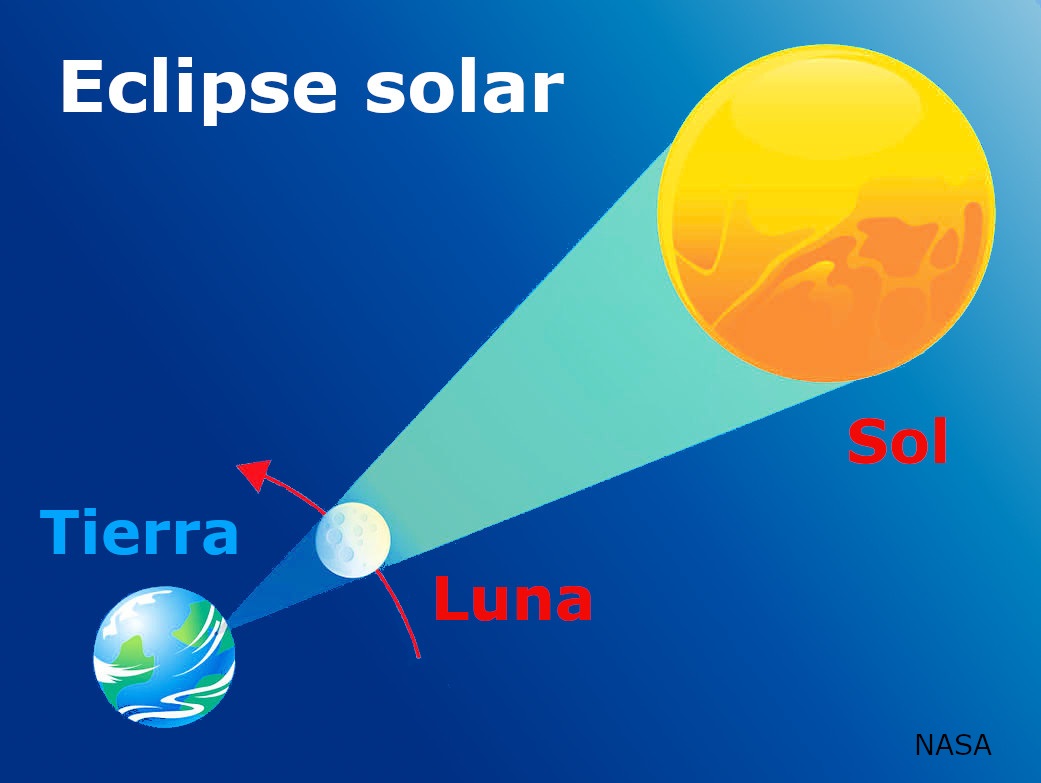
Tipos de eclipses
Desde el punto de vista del observador, los eclipses de Sol se clasifican en: totales, anulares y parciales. Dicho observador dirá que ha visto un eclipse total cuando ve la Luna cubrir enteramente el disco del Sol. Sin embargo, otro observador situado centenares de kilómetros más al norte o más al sur que el primero verá la Luna cubrir sólo una parte del Sol, de manera que para él el eclipse será parcial. Hay ocasiones en las que la Luna no llega a cubrir enteramente el Sol desde ningún punto de la Tierra, por lo que para todos los observadores el eclipse es parcial.
Otro tipo común de eclipses es el eclipse anular. Estos se dan cuando el observador ve que el disco de la Luna no llega a cubrir el disco del Sol, aunque sus centros estén bien alineados. Esto es debido a que la Luna se encuentra ese día más lejos de la Tierra que en el caso de un eclipse total, de modo que su disco se ve más pequeño que el del Sol. En tal caso se observa un anillo brillante rodeando el disco lunar.
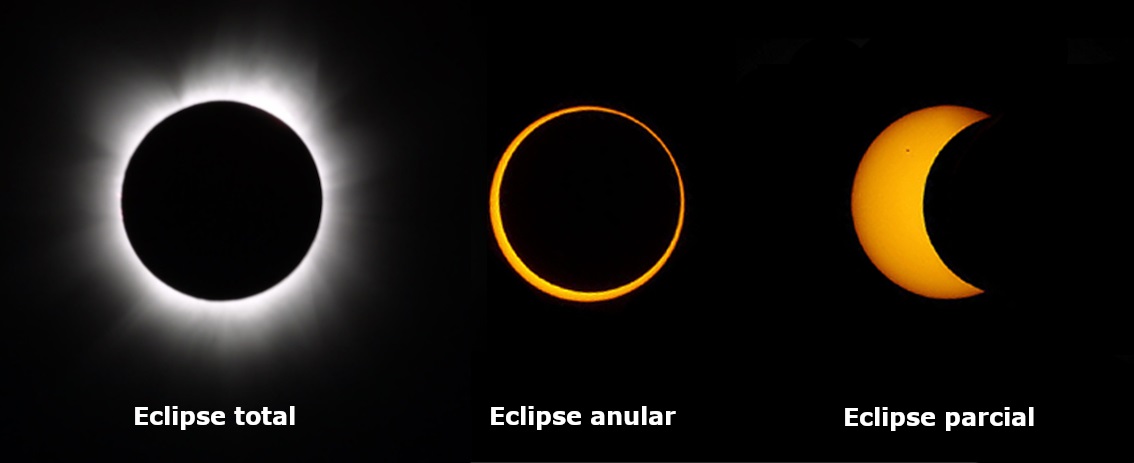
¿Cuándo suceden los eclipses?
El plano por el que orbita la Luna alrededor de la Tierra (en color azul en la figura siguiente) está inclinado 5º respecto al plano por el que orbita la Tierra (y la Luna) alrededor del Sol (en amarillo). Dado que los eclipses requieren del alineamiento casi perfecto de los tres astros, los eclipses se dan muy pocas veces a lo largo del año. La Luna tarda un mes aproximadamente en completar una vuelta alrededor de la Tierra, por lo que si ambos planos coincidieran tendríamos 12 eclipses de Sol y otros 12 de Luna cada año. En la práctica, el número de eclipses que se dan cada año es de entre 4 y 7, incluyendo los de Sol y Luna. En muchos casos los eclipses son parciales (o incluso penumbrales sólo en los de Luna), y visibles desde una fracción de la superficie terrestre. Cuando la Luna se encuentra cerca del Sol en el cielo la fase es de luna nueva, y existe la posibilidad de un eclipse de Sol. Cuando la Luna se encuentra en la dirección opuesta al Sol (visible toda la noche) la fase es de luna llena, y existe la posibilidad de un eclipse de Luna.
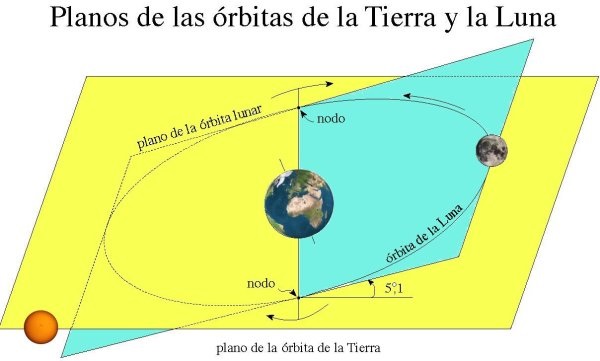
Para mayor información sobre los eclipses de Sol consulte el artículo "Algunas precisiones y curiosidades sobre los eclipses de Sol" (pdf) publicado en el Anuario del Observatorio Astronómico para 1999, o bien el libro "Eclipses de Sol. El eclipse anular de Sol del 3 de octubre de 2005 en España", publicado por el CNIG.
Información básica
Durante el anochecer del lunes 8 de abril de 2024 será posible observar un eclipse parcial de Sol de muy baja magnitud desde las islas Canarias más occidentales (El Hierro, La Palma, La Gomera, Tenerife y Gran Canaria) y el extremo noroeste peninsular.
El eclipse apenas será apreciable puesto que el ocaso de Sol se producirá poco después de su comienzo. En América este eclipse será visible como total.
En la imagen anterior se puede ver la evolución del eclipse. Los tiempos corresponden a la hora oficial. En la pestaña "Desde las capitales de provincia" podrá consultar la evolución en cada una de ellas.
El último eclipse solar visible como parcial en España tuvo lugar el 14 de octubre de 2023. El siguiente se producirá el 29 de marzo de 2025 y será visible en toda España.
El próximo eclipse solar visible como total en España tendrá lugar el 12 de agosto de 2026, seguido de otro el 2 de agosto del año siguiente. Poco después, el 26 de enero de 2028, se podrá ver un eclipse anular.
Próximos eclipses de Sol visibles en España
Aunque es común poder observar un eclipse parcial de Sol cada varios años desde un lugar dado, no es lo mismo poder ser testigo de un eclipse total o anular. En España, el último eclipse anular visible sucedió en 2005, y el último eclipse total se pudo ver en 1959, y solo desde las islas Canarias; la Península Ibérica no ha visto un eclipse total de Sol desde 1912. Esta sequía de eclipses va a terminar próximamente, pues en los años 2026-2028 habrá dos eclipses totales y uno anular que se podrán ver desde algún punto de nuestra geografía.
Eclipse total de 12 de agosto de 2026
El primer eclipse total de Sol visible en la Península Ibérica en más de un siglo tendrá lugar el 12 de agosto de 2026. La franja de totalidad de este eclipse cruzará España de oeste a este y pasará por numerosas capitales de provincia desde La Coruña hasta Palma, incluyendo León, Bilbao, Zaragoza y Valencia. España está situada al final de la franja de totalidad, por lo que esta sucederá cuando el Sol se esté poniendo muy cerca del horizonte. Ello obligará a observar el eclipse desde un lugar con buena visibilidad hacia el oeste. Al suceder en verano, las probabilidades de tener un cielo despejado son altas en una gran parte del país.
Eclipse total de 2 de agosto de 2027
Casi un año después del eclipse de 2026, otro eclipse total cruzará la Península Ibérica. La franja de totalidad atravesará el estrecho de Gibraltar de oeste a este y cubrirá el extremo sur de la Península, incluyendo ciudades como Cádiz, Málaga, Ceuta y Melilla. El eclipse tendrá lugar durante la mañana (10:50am aproximadamente), y la máxima duración de la totalidad en España corresponderá a Ceuta con 4 minutos y 48 segundos.
Eclipse anular de 26 de enero de 2028
La franja de anularidad de este eclipse cruzará la Península de sudoeste a noreste justo antes de la puesta de Sol. La franja incluirá ciudades como Sevilla, Málaga, Murcia y Valencia, donde la fase anular se verá completa. En Palma y Barcelona solo se verá el principio de la fase anular pues el Sol se pondrá antes de que esta termine. Debido a la baja elevación de Sol sobre el horizonte, la observación de este eclipse requerirá una excelente visibilidad en la dirección de la puesta de Sol.

